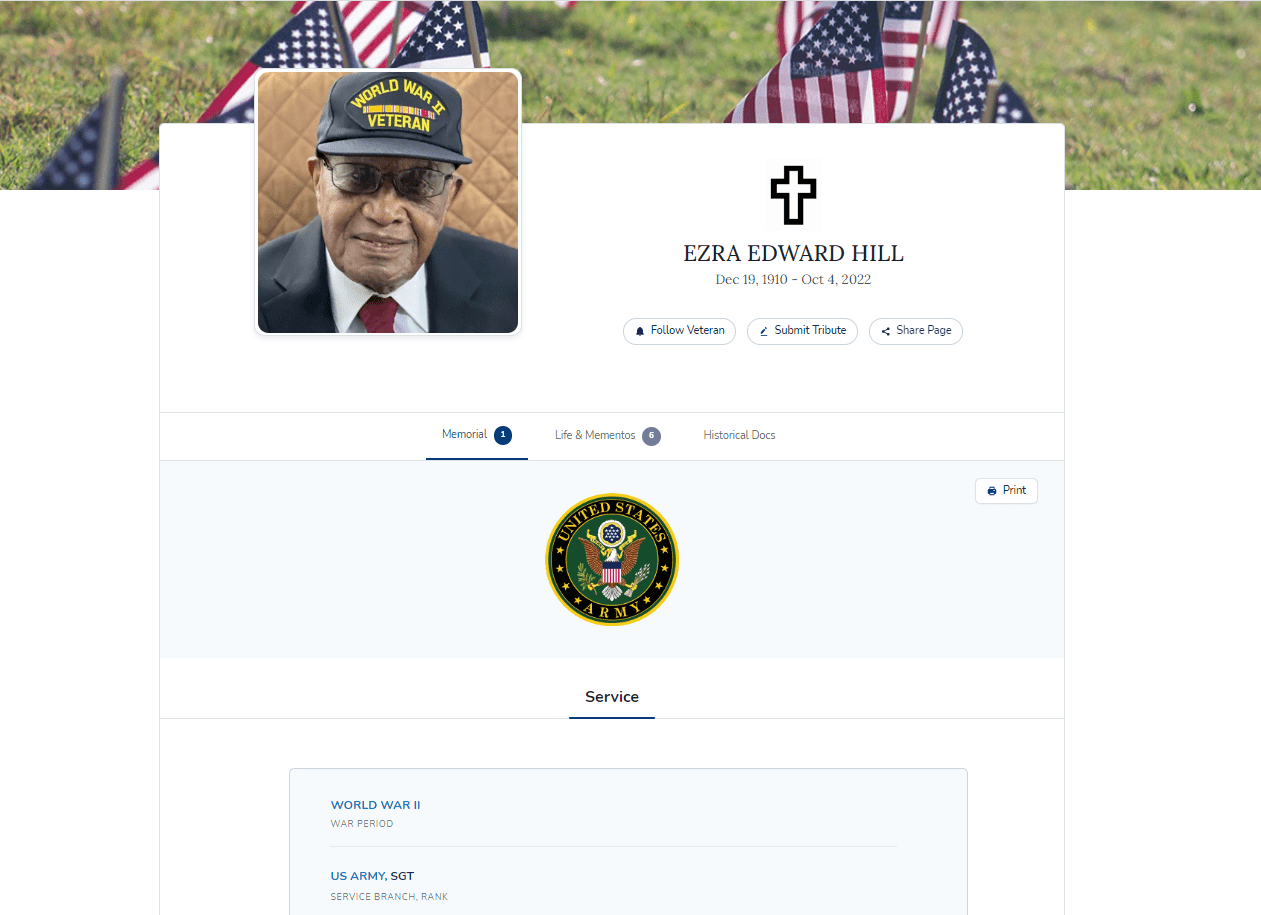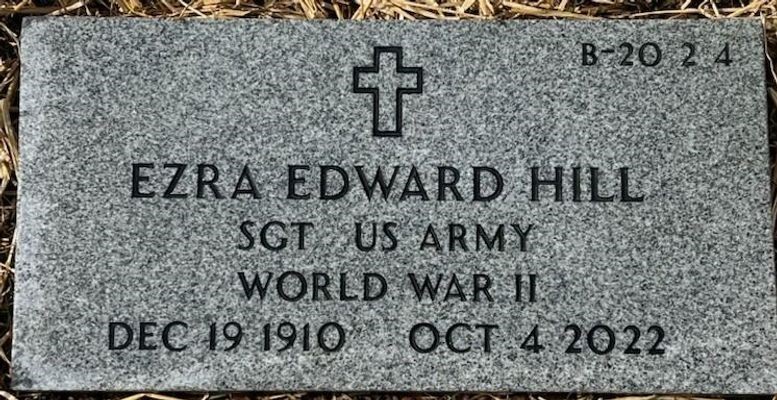
In 2019, VA’s National Cemetery Administration (NCA) launched the Veterans Legacy Memorial (VLM), an innovative, interactive web site with memorial pages for more than 4.5 million Veterans. The path to that moment took just over two years. The impetus for the program was to make the experience of memorializing Veterans available to people everywhere, not just at a physical gravesite.
VA’s Center for Innovation provided the $500,000 in seed money to create a prototype of the digital platform. A successful demonstration of the product enabled NCA to secure IT funding from VA to assemble a larger team of specialists to continue development and testing. The development team finished its work just in time for the VLM site to go live by Memorial Day.
VLM utilizes the millions of records contained within NCA’s Burial Operations Support System database. Each Veteran’s memorial page is populated with information about his or her military service and place of burial. At the time of its initial rollout, the site offered little beyond those barebone details but upgrades have expanded its features and made it fully interactive.
Beyond just viewing a Veteran’s profile, family members, friends, and other users can post comments and tributes, upload images and historical documents, and submit biographical information about the Veteran’s life, times, and military service. Visitors also have the option of sharing memorial pages by email and posting them to Facebook and Twitter. Another useful feature is the ability to follow a Veteran and be notified when his or her page is updated.

The memorial page of World War II Veteran Ezra E. Hill offers an instructive example of how the VLM platform works. His page provides the basics: his date of birth and death (Dec 19, 1910—Oct 4, 2022), his era of service (World War II), and his military branch and rank (Army, SGT). This is identical to the information found on his headstone. The page also lists the name of the cemetery where he was interred (Garrison Forest Veterans Cemetery in Maryland, one of more than 120 VA-grant funded state, tribal, and territory Veteran cemeteries) and the exact location of his gravesite (Section B-20, Site 4, Row 2).
But these data points are just the beginning. Recent additions incorporating information from his obituary and another internet source flesh out his life story and enrich the visitor’s appreciation of his legacy. Hill was born in Baltimore, played center field in the Negro Baseball League, and participated in the invasion of Normandy. He owned a shoe store and built it into a successful family business, coached Little League baseball, and had many children, grandchildren, and great-grandchildren. Most remarkable of all, he lived to the ripe old age of 111 and, for a few weeks before his passing in the fall of 2022, he was the oldest known surviving Veteran of World War II.
VLM users can view and add more information to Hill’s page or find their own Veterans and contribute to their legacies. Currently, Veterans interred in VA-managed National Cemeteries; VA-funded state, tribal, and territory Veteran cemeteries; and two National Park Service cemeteries are included in VLM. By Memorial Day 2023, Veterans pages will be added from 27 Department of Defense-managed cemeteries, including Arlington National Cemetery.
Searching for a Veteran is easy, using first and last names and a variety of filters such as service branch, cemetery name, and more. Content can be submitted using various text fields, drop-down choices, and drop & drag options. All content is reviewed by VLM moderators before being posted to Veteran pages to ensure it conforms to the VLM User Policy and appropriately honors Veterans. The Veterans Legacy Memorial invites you to explore the site, pay your respects to the Veterans who served our country, contribute to their legacy if possible, and, in doing so, leave your own mark on one of VA History’s 100 Objects.

By James LaPaglia
APR, Digital Services Officer, National Cemetery Administration
Share this story
Related Stories

History of VA in 100 Objects
Object 96: Postcard of Veterans Vocational School
In 1918, the government created the first nationwide vocational training system to help disabled Veterans acquire new occupational skills and find meaningful work. Over the next 10 years, more than 100,000 Veterans completed training programs in every field from agriculture and manufacturing to business and photography.

History of VA in 100 Objects
Object 95: 1840 Census of Pensioners
In a first, the 1840 census collected data on Veterans and widows receiving a pension from the federal government. The government published its findings in a stand-alone volume titled “A Census of Pensioners for Revolutionary or Military Services.”

History of VA in 100 Objects
Object 94: Southern Branch of the National Home
The Southern Branch of the National Home for Disabled Volunteer Soldiers opened in Hampton, Virginia, in late 1870. The circumstances surrounding the purchase of the property, however, prompted an investigation into the first president of the National Home’s Board of Managers, Benjamin Butler.


